Last Updated: 22/07/2025
Kitten Feeding Chart: How Much To Feed Your New Kitten
Having a new kitten is a fun and exciting experience! Now that you've got all your kitten's essential items find out how much to feed your growing kitten
Author: Dr Antonella Virina DVM
Reading Time: 50 minutes - long read
Having a new kitten is a fun and exciting experience! Now that you've got all your kitten's essential items, let's talk about how much to feed your growing kitten.
One of the most common questions pet parents ask is how much to feed their pets. Younger pets grow at a rapid rate, often leading pet parents to wonder whether they are feeding the right amount of food.
Don't stress - this comprehensive guide will explain your kitten's nutritional requirements, which food is suitable for them throughout kittenhood, how often and how much to feed, and other nutritional information that will help you ensure your kitten grows up healthy and happy.
Understanding a Kitten's Nutritional Needs
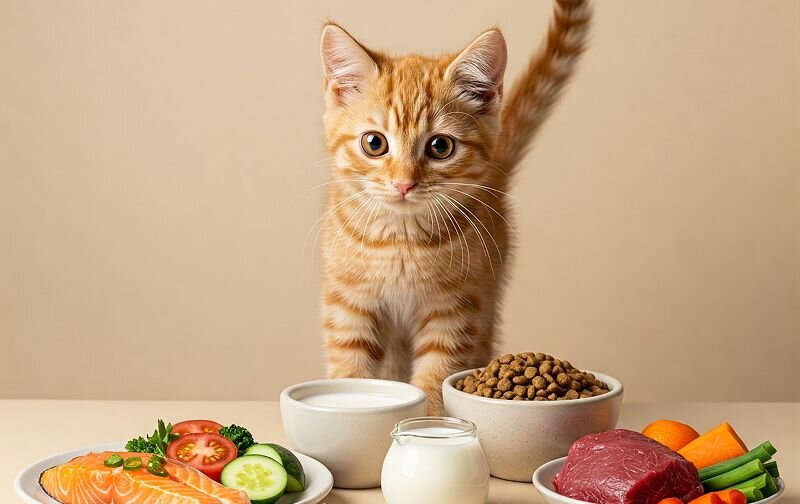
Energy
Energy is an especially important part of a kitten's diet. Food contains chemical energy and when food is eaten and broken down in the body, the energy released becomes the fuel necessary to carry out body functions and day-to-day activities.
Kittens have higher energy requirements than adults as their bodies are still constantly growing. Because of this, kitten diets are specially formulated to contain the right energy levels to promote healthy growth and development.
With cats being carnivores, the energy in cat food is derived primarily from protein and fats, but to a lesser extent, carbohydrates as well.
On food packaging, you would see 'Metabolisable Energy' or 'ME' often listed as kcal (kilocalories) and this value can differ across products, even those of the same brand.
Digestibility
Using quality ingredients is one thing, but whether or not an animal can readily use the nutrients contained in a diet is another. Digestibility essentially refers to how much a particular food can be digested, that is to say, how much of what an animal eats can easily be broken down, processed, and absorbed by an animal's body. Even if a particular ingredient is full of nutrients, if it's not digestible, our pets lose out on the nutritional benefits. Apart from just the specific ingredients, the form in which these ingredients are used, where they are sourced, how they are processed or prepared, as well as the specific quantities and ratios they are added are all factors that affect the digestibility of the diet.
Now how do we know if a kitten's diet is digestible? While manufacturers take care of the technical aspects of measuring digestibility via feeding trials and laboratory tests, cat parents can have a closer look at their kitty's stool quality. In general, healthy stools are formed, not too soft nor too hard, and easy to pick up or clean up. In terms of volume, your kitten's poops should be proportionate to how much they eat. If your kitten's stool quality, volume or consistency has changed, diet could be a factor but as digestive upsets can commonly occur with younger pets, it would be best to investigate this further with your veterinarian.
Protein
Protein is a macronutrient composed of smaller units called amino acids. This nutrient is a vital component in a kitten's diet because kittens undergo a period of rapid growth and development and to fuel this, they require sufficient protein to serve as the building blocks of their growing bodies.
As obligate carnivores, cats require more protein compared to dogs, which are considered omnivores. While cats have evolved to be able to digest carbohydrates to an extent, protein is still their main nutritional requirement as they have a limited ability to synthesise certain amino acids (like taurine and arginine) as readily as omnivores and herbivores, and cats can obtain these amino acids largely from animal protein.
The Association of American Feed Control Officials (AAFCO) recommends that for growth and reproduction, cats require a diet that's at least 30% protein. However, this does not mean that cats need an excessive amount of protein. Excess protein beyond what your kitten requires may lead to health issues in the long run.
Calcium
As the most abundant mineral in the body, calcium is primarily known for its major role in the formation of healthy bones and teeth. As kittens grow, they require more calcium than adult cats to support healthy skeletal growth and development; 99% of the calcium in the body is stored in bones, with the remaining 1% utilised in a variety of body functions like muscle contraction, blood clotting, enzyme activity, nervous functions, hormones, etc.
If calcium is important, does that mean your kitten needs a calcium supplement? No, not necessarily. A healthy kitten that's kept on a high quality, complete and balanced diet should have no need for supplementation as this provides them all required nutrients and in the right amounts. Excessive calcium can result in certain nutrient deficiencies, skeletal abnormalities, and may even contribute to urinary issues, which cats are notorious for. It's important to first reach out to your veterinarian before starting your kitten on any supplements to ensure they are suitable.
Fatty Acids (DHA)
Omega fatty acids are known mostly for their anti-inflammatory properties. Omega-3 and omega-6 are the more popular forms of omega fatty acids and a healthy balance between the two are often recommended for optimal health in pets.
Omega-3 is typically derived from fish, like salmon, mackerel, and trout. Omega-6 fatty acids, on the other hand, are often from vegetable oils. For kittens, omega-3 fatty acids in the form of DHA (docosahexaenoic acid) is essential as this plays a key role in supporting healthy retinal development (vision) and brain development.
Compared to EPA (eicosapentaenoic acid), DHA is taken up more by cats but omega fatty acids in general provide several health benefits. Omegas work like a wonder ingredient as they help reduce inflammation, promote healthy skin and coat, joint health, immune response, and even cardiovascular functions. Commercial diets often include a combination of omega fatty acids in optimal amounts to promote overall health.
Antioxidants
Physiological processes produce free radicals, a normal byproduct kept in check by the body's antioxidant defence systems. However, certain other factors such as inflammation and external forms of stress like pollution and toxins can all contribute to the production of free radicals. These molecules, when left unchecked, would act on the cells of the body, causing damage and oxidative stress.
The main purpose of antioxidants is protection against oxidative stress. Antioxidants work via a chemical reaction to neutralise free radicals, thereby protecting the cells and helping support the body's immune system. Certain antioxidants also have other benefits. Vitamins A, C, and E, for example, assist with healthy vision. Selenium, which is a mineral, is used up by the body to produce natural antioxidants like glutathione.
Kittens, like other young animals, are still growing and can be rather delicate especially while they're still quite young. Antioxidants help to provide them extra support in this stage of life, helping to ensure healthy growth and development.
Intolerance of kittens to cow's milk
It is important to note that cow's milk is not suitable to give kittens. When kittens are still drinking mum's milk, their bodies produce lactase, the enzyme required to break down lactose, the sugar in milk. However, cow's milk is higher in lactose than cat's milk and it doesn't contain the right balance of nutrients for kittens; a small kitten's tummy would be unable to tolerate or digest it properly, resulting in diarrhoea and dehydration.
Want to know more? Take a look at our guide to how to choose the Best Kitten Food.
Feeding Recommendations by Growth Stages
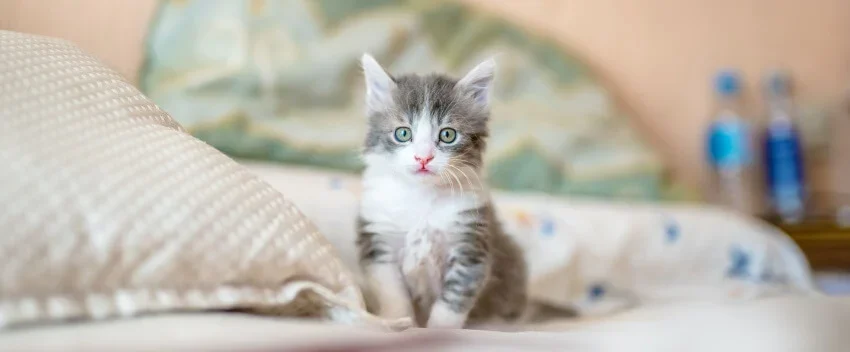
Determining a Kitten's Caloric Requirement
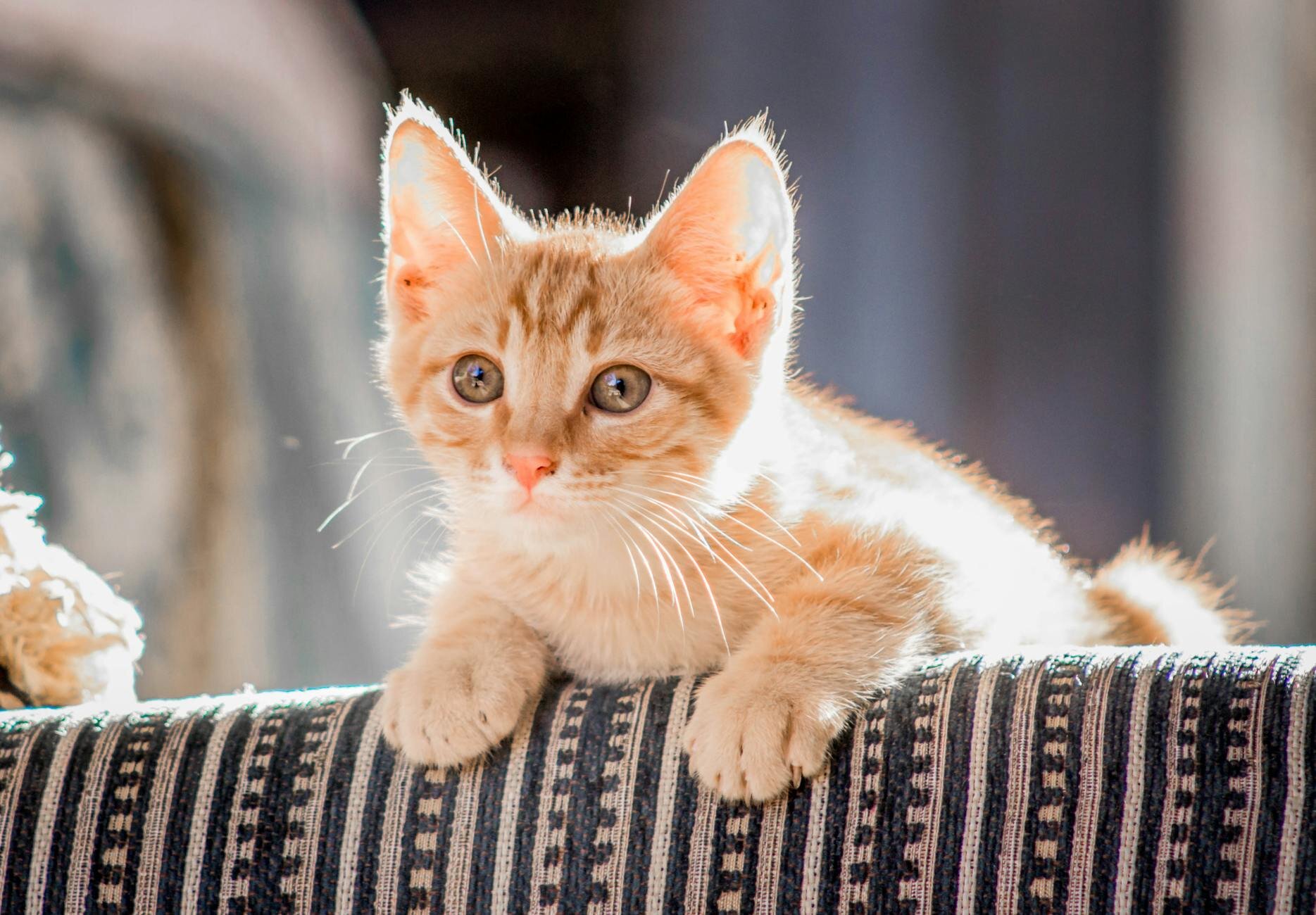
- To determine how much to feed our pets, we follow a specific formula. We first determine a pet's resting energy requirement (RER) which refers to your pet's energy requirement at rest at a controlled temperature.
- RER = 70 x (body weight in kg)0.75
- The next step is to look at a pet's life stage and/or body condition as this helps us choose which coefficient to use for the formula.
- For kittens, the coefficient is 2.5.
- We then multiply the RER by the coefficient to obtain the value of your kitten's daily energy requirement (DER).
- DER = RER x 2.5
So, for example, an average 2-month old weighs 0.9 kg.
• RER = 70 x (0.9 kg)0.75
• RER = 70 x (0.92)
• RER = 64.68 kcal/day
• DER = 64.68 x 2.5
• DER = 161.70 kcal/day
Determining Food Quantity
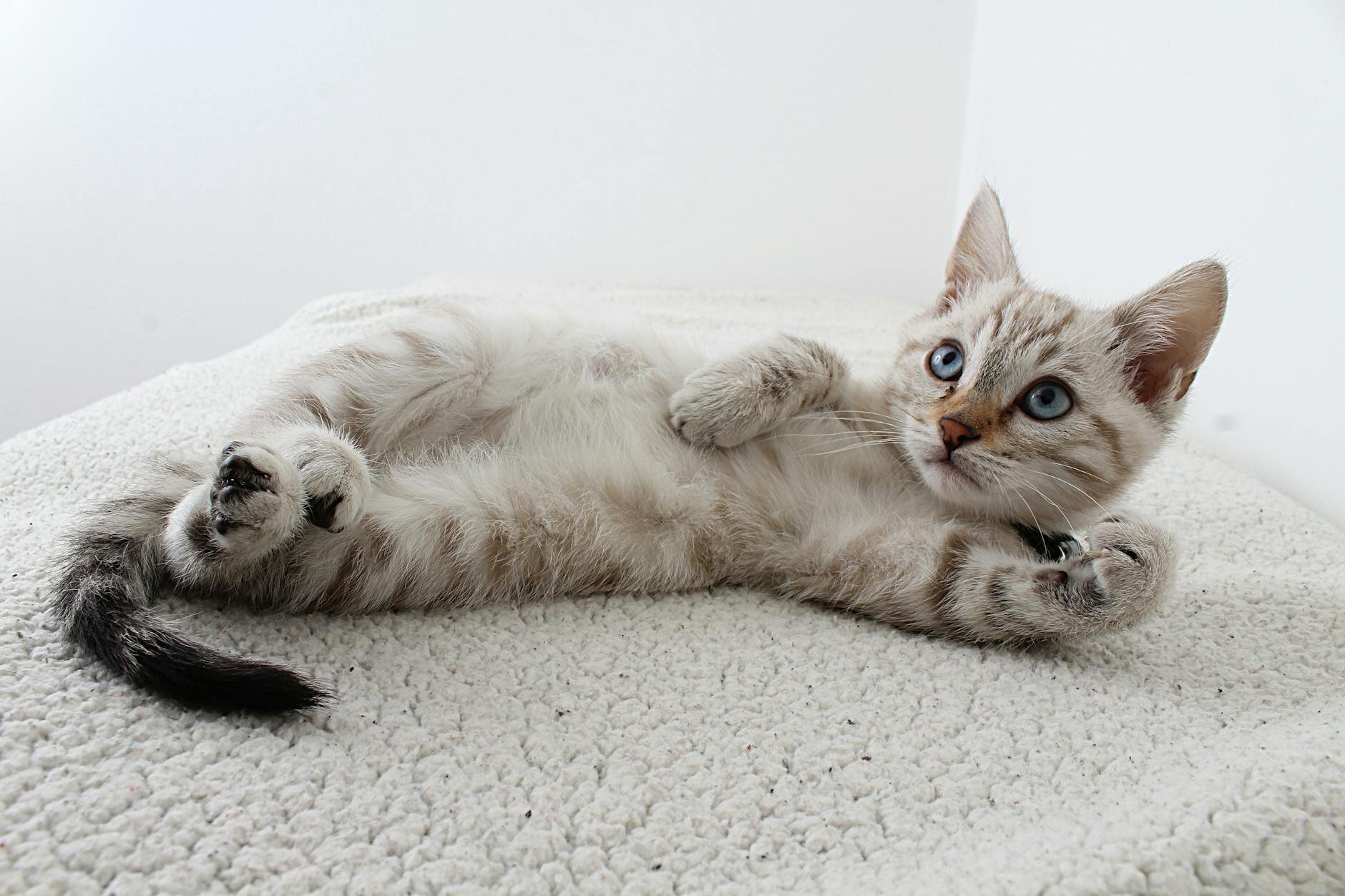
Now, how do you know specifically how much of a particular food to feed your kitten? We need to first know your kitten's current weight at any one time. This helps you determine how many calories they should be having per day (DER).
Next, have a look at the packaging on your chosen kitten food. You should be able to find a kcal/kg, kcal/can, kcal/pouch value or any similarly written unit. This tells you how many calories a specific food contains.
Then we divide your kitten's DER by the caloric content of their food. Depending on how many meals per day you give your kitten, we further divide that value to determine the feeding amount for each meal.
For example, a 3-month old kitten that weighs 1.4 kg is on the ADVANCE Kitten Chicken with Rice. According to the chart, this kitten should have 225 kcal/day. The food's average metabolisable energy value is 390 kcals/100 g.
- Plugging in these values into the formula, we get: 225 (required calories) / 390 (caloric content of the food) = 57.69
- For this cat, they would require 57.69 grams/day or 58 grams/day. If this kitten eats 4 meals a day, that's 14.5 grams/meal.
Certain foods and brands, however, take care of the guesswork and already provide a feeding guide. For this, you would typically just need to know your kitten's weight and/or their life stage and there would be a listed recommended amount of food for them corresponding to this.
As an example, if you have a 5-month old kitten weighing 2.7 kg and you're feeding your kitten the Hill's Science Diet Kitten Indoor Dry Food, the recommended daily feeding amount for this specific food is 70 grams per day.
For wet food, we follow the same steps. For a 4-month old, 2-kg kitten eating the Wellness Core Tiny Tasters Kitten Pate Chicken Wet Cat Food, the recommendation is 0.5 -1 pouch/0.5 kg body weight per day, so for this kitten, they should be eating 2-4 pouches per day.
For dry food, it is worth mentioning that for accuracy, it would be best to measure out the food in grams instead of cups. The measurement of wet food, on the other hand, often depends on the format it comes in, like cans, pouches, or trays.
For more information, check out our guides to the Best Dry Kitten Food and Best Wet Kitten Food.
Wet Food vs Dry Food for Kittens
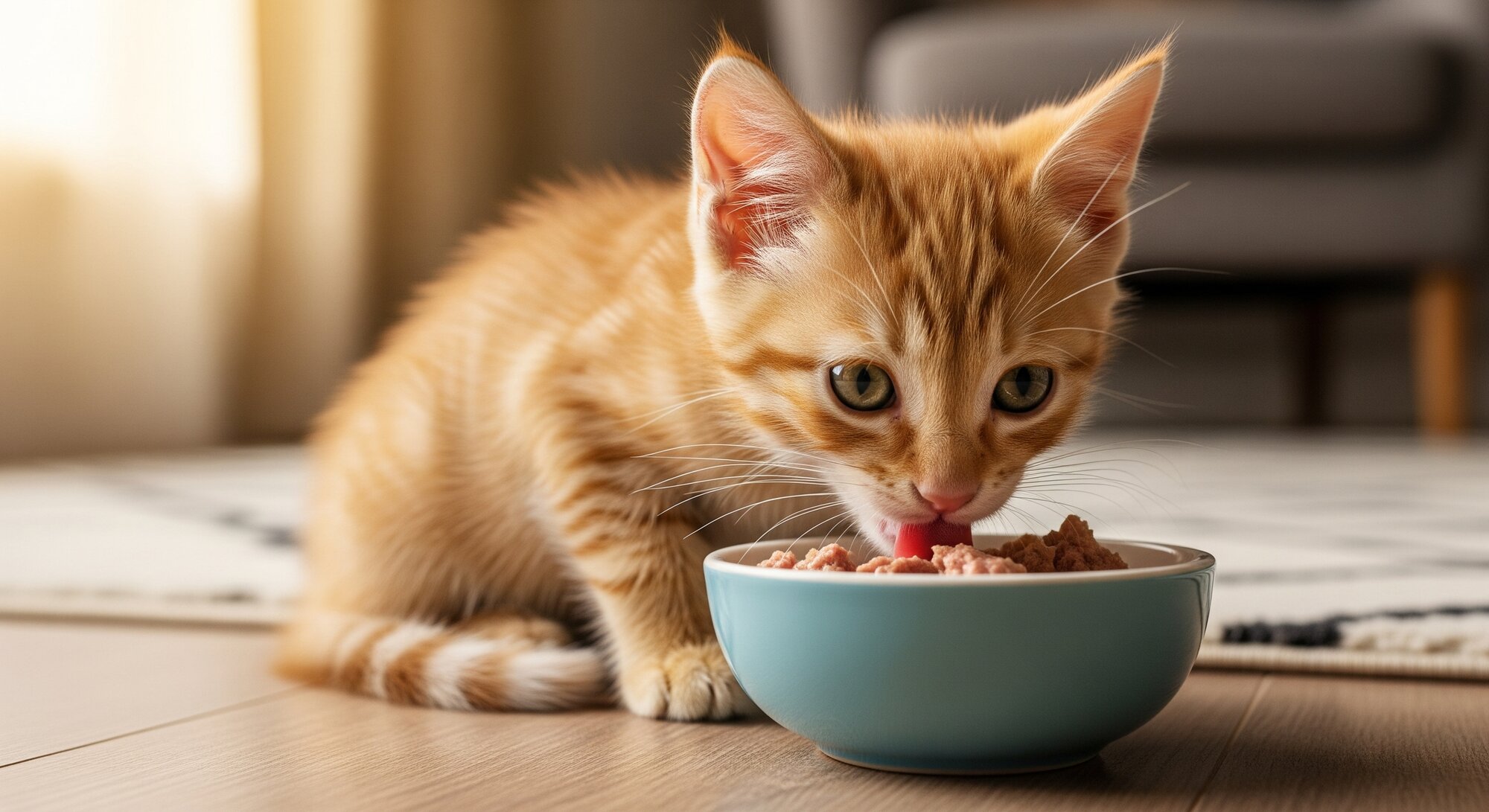
In selecting food for your kittens, should you be buying only wet food? Or dry food? Truthfully, there's really no one right answer for this question.
Wet food is a particular favourite for many cat parents. Cats are notorious for not drinking enough water and feeding them wet food is an easy and convenient way to help boost hydration. The moisture also promotes the feeling of fullness and serves another purpose: palatability. Wet food comes in many forms like gravies, jellies, and pates. Some wet food also includes delicious chunks of meat in an appetising broth or sauce. The variety in flavour and texture can make wet food extra appealing to even the fussiest kitties.
Dry food, on the other hand, can be a more convenient option for many pet parents. It's easier to store, and once opened, it keeps better and lasts longer without spoiling. Plus, it helps you save a bit more money as it's more calorie-dense per serving compared to wet food. Another advantage of dry food is it can be used in food puzzles and food dispensing toys. These neat toys and puzzles provide a fun and engaging way to deliver your kitten's meals and for cats who scoff their food, these are fantastic to help pace their eating. With dry food, clean up is faster, easier, and more convenient. Scatter your kitten's kibble into a product like the Paws for Life Snuffle Feeding Mat to provide them a fun way to forage for their food, or pop their kibble in the Catit Senses Food Tree to stimulate their natural hunting instincts .
Ultimately, cats can do well on either wet or dry food. Some cats may only prefer one type of food over the other, and some may be happier with a mix of the two. Providing your kittens a variety of food, such as in the case of rotational diets can help keep mealtimes interesting, cover nutritional imbalances, and reduce the risk of developing food allergies.
Want to know more? Check out our guide to Wet vs Dry food for Cats.
Frequency of Feeding
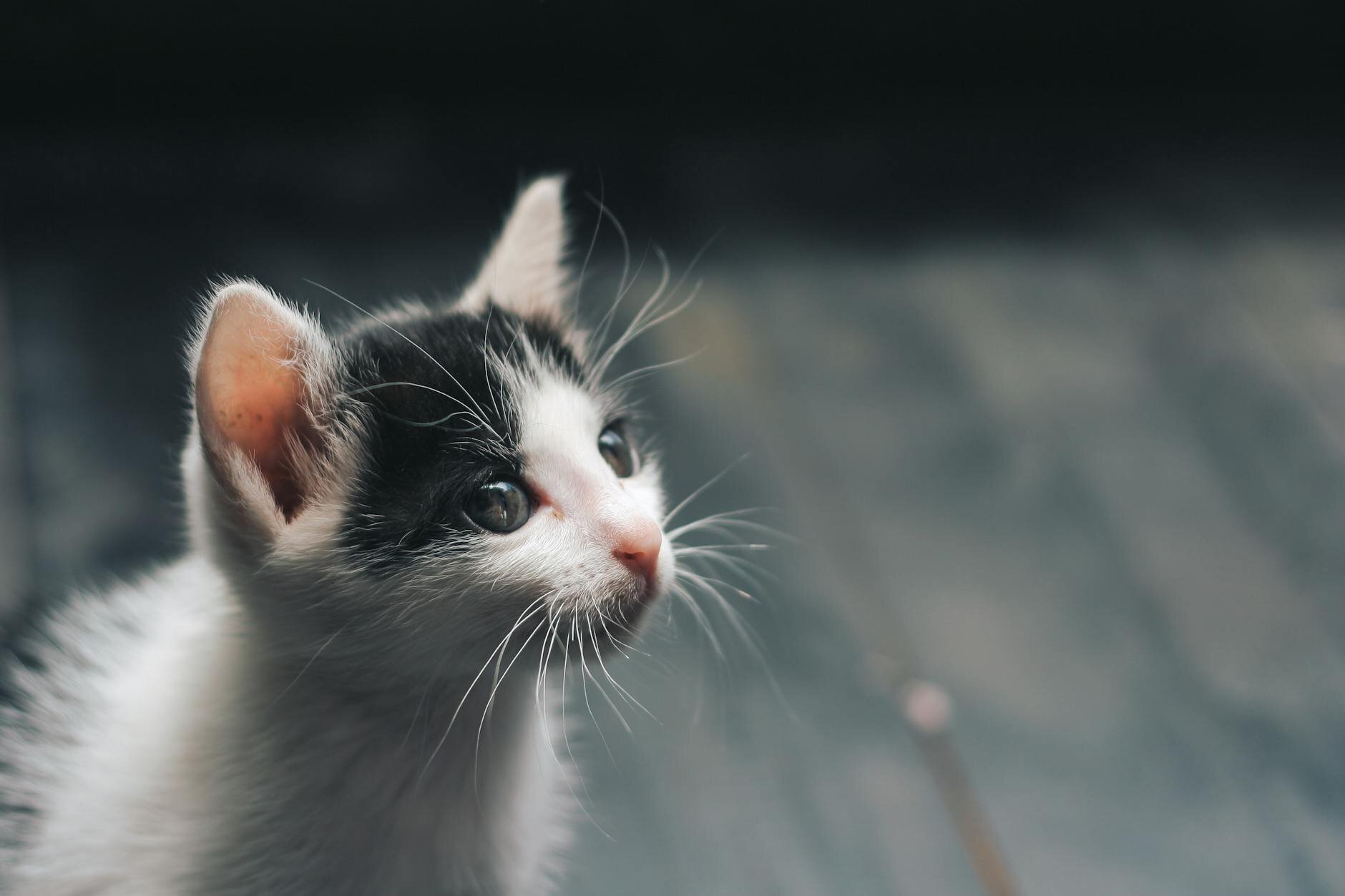
Generally, because younger animals are experiencing a period of rapid growth, their bodies are still developing, and their tummies can't hold as much food as adults, their meals are often smaller and served more frequently. Very young kittens, especially during weaning, may benefit from having food available to them at all times (this is called ad libitum feeding) so that they can learn to interact with food and learn that it's something for them to eat, but while some cats can self-regulate how much they eat as they grow older, we would generally recommend switching to set meal times especially after weaning. Ad lib feeding can unfortunately lead to excessive weight gain in some cases and make it difficult for you to keep track of any changes in appetite or eating behaviour.
Under 5-6 months old, you may offer your kitten 3-4 small meals in a day, after which, you may then transition to having 2 slightly larger meals per day but this can still depend on the individual cat and your own schedule. Cats are creatures of habit so having a consistent feeding schedule is important.
In some cases though, it's not always easy to strictly adhere to a schedule especially for busy cat parents. An automatic cat feeder like the Catit Pixi Smart 6 - Meal Feeder can be an especially handy tool to invest in. It can be programmed to dispense up to 6 preloaded meals per day and can hold both dry food and wet food, as well as treats.
Want to know more? Check out our guide to the Best Automatic Feeders for Cats.
With so much information out there about nutrition for cats, it can understandably be tricky to really determine specifically how much food to feed your kitten. As they undergo such a rapid period of growth and development, it's important to do constant weight checks to see how your kitten is tracking along and adjusting their diets accordingly to ensure your cat is at a healthy body weight, not too lean nor too heavy, but at just the right weight range for their size at any one time.
Keep in mind that the feeding guides are really just recommendations and only serve as a good starting point of how much to feed your kitten. Breed/size, lifestyle, health conditions are just some of the factors that affect how much a pet should be eating. For more specific advice on how much to feed your kitten, please reach out to your regular veterinarian or out Vet Squad for more advice.
Further Reading
Want to read more? Check out our other articles:
What is the best dry kitten food?
What is the best wet kitten food?
How to care for a newborn kitten
History
Our experts continually monitor the health and wellness space and we update our articles when new information becomes available.
Tue 22 Jul 2025
Edited by Dr Gillian Hill BVSc (Hons)Dr Antonella Virina DVM
Veterinarian (DVM)
Dr. Antonella graduated from university in 2019 with a Doctor of Veterinary Medicine with a specialization in research and diagnostics. Enjoying the dynamic and continuous learning process that comes with being a vet, Dr. Antonella helps provide sound advice to pet owners to ensure the health and wellbeing of their pets.

